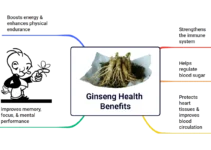
Rauvolfia serpentina, commonly known as serpentina or Indian snakeroot, is a perennial shrub native to the Indian subcontinent and Southeast Asia. For centuries, it has been used in Ayurvedic, Unani, and Chinese medicine for its potent healing properties. The plant’s roots contain several alkaloids, most notably reserpine, which gave serpentina an important role in both traditional and modern medicine—especially for heart and nervous system disorders.
I personally use serpentina and have found it effective, especially in controlling high blood pressure. It’s a helpful natural remedy if you prefer a plant-based approach to managing hypertension.
The good news is that you can easily grow serpentina in your backyard and harvest it whenever you need it. Here’s how to plant serpentina at home:
- Soak the seeds in water for 24 hours to improve germination.
- Sow them about 1–2 mm deep in well-drained, fertile soil that’s rich in organic matter.
- Keep the soil moist but not waterlogged to avoid root rot.
- Provide sunlight by planting it in full sun or partial shade.
So, what are the real health benefits of serpentina?
To learn more, you may read about the serpentina benefits, both traditional and modern applications, as well as the possible side effects and safety precautions in the next section.
Like any herbal medicine, it’s important to use serpentina responsibly and under proper guidance.
Table of Contents
Serpentina Benefits: Traditional and Modern Uses
1. Controls hypertension
One of the most well-known uses of serpentina is for controlling high blood pressure. Reserpine, extracted from its roots, was among the first natural compounds used in modern medicine as an antihypertensive drug.
- How it works: Reserpine reduces neurotransmitters such as norepinephrine at nerve endings, relaxing blood vessels and lowering heart rate.
- Significance: Before synthetic antihypertensive drugs, serpentina was widely used as a reliable treatment for hypertension as part of traditional medicine.
In traditional medicine, the dried root is either powdered and taken in small doses, or brewed into a decoction (a kind of herbal tea). Modern medicine, however, often uses purified reserpine in precise doses to treat high blood pressure. Doctors prescribe reserpine in very small doses (usually starting at 0.05–0.25 mg daily).
2. Medicine for mental health disorders
Traditionally, serpentina was used to calm agitation, anxiety, and insomnia. In psychiatric medicine, reserpine was prescribed to manage schizophrenia and psychosis. Its sedative effects come from regulating neurotransmitter levels in the brain.
However, modern psychiatric treatments have largely replaced reserpine due to its side effects like depression and fatigue. It has largely been replaced by newer psychiatric medications.
3. Antivenom
In traditional medicine, serpentina earned the name “Indian snakeroot” because it was believed to counteract snakebites and other venomous bites. Folk healers in India and Southeast Asia used its root as an antidote centuries before modern antivenoms were developed.
However, it is important to note that modern scientific evidence does not confirm serpentina as an effective treatment for venomous bites. Its reputation as an antivenom likely comes from its:
- Calming and sedative effects, which helped reduce panic and agitation after a bite.
- Blood pressure–lowering action, which might have slowed circulation and delayed venom spread in the body.
- Traditional use alongside other herbs, where it may have complemented actual detoxifying plants.
Today, the only proven treatment for snakebite or venomous bites is hospital-administered antivenom. Serpentina should never replace emergency medical care.
4. Aids in digestion
The plant’s root contains alkaloids that have a calming effect on the stomach and intestines, which may help in:
- Reducing stomach cramps and bloating by relaxing smooth muscles of the digestive tract.
- Improving appetite in people with weak digestion.
- Easing mild diarrhea or dysentery (used in folk medicine for gastrointestinal disturbances).
- Lowering fever and relieving abdominal discomfort when associated with indigestion.
However, modern scientific studies directly linking serpentina to digestion are limited. Most of the knowledge comes from traditional herbal use and anecdotal reports.
5. Reduces fever
Serpentina contains alkaloids, especially reserpine, that act on the nervous system and the circulatory system that may promote relaxation and better sleep thereby allowing the body to recover naturally during fever. It also improves blood circulation, which may help regulate body temperature.
Although these traditional claims are widely recorded in Ayurveda and folk medicine, modern research has not yet fully confirmed serpentina as a fever-reducing herb. Its fever benefits are more anecdotal than clinically proven.
6. Acts as general sedative or tonic
Serpentina has long been used in traditional medicine as a natural sedative to calm the mind and body. The main active compound, reserpine, works by:
- Depleting neurotransmitters such as norepinephrine, dopamine, and serotonin from nerve endings. This reduces nervous system overactivity, leading to relaxation.
- Slowing heart rate and lowering blood pressure, which naturally creates a calming, soothing effect.
- Reducing agitation and restlessness, making it easier to sleep and recover from stress.
Because of these effects, serpentina was historically used to treat insomnia before modern psychiatric drugs were developed.
Related Post: How to Get Rid of Insomnia: 10 Creative Ways to Better Sleep
Traditional and Modern Use of Serpentina as Sedative
Root
- Boil 1–2 grams of root in 1 cup of water for 10–15 minutes.
- Drink once daily in the evening to promote sleep.
Powdered Root
Traditionally, 250–500 mg of root powder is taken with warm milk or honey.
Extracts or Capsules (Modern Forms)
Standardized supplements may contain purified reserpine or alkaloid extracts, but these should be taken only under medical supervision due to strong sedative effects.
This should not be mixed with alcohol, sleeping pills, or other sedatives without medical guidance.
7. Potential Emerging Applications
Current research is exploring serpentina’s possible benefits in:
- Cancer treatment
- Diabetes management
- Neurodegenerative diseases (e.g., Parkinson’s, Alzheimer’s)
Note that these applications are still experimental. Hence, these are not yet recommended as standard treatments.
Adverse Reactions and Safety Concerns
Despite its therapeutic benefits, serpentina has strong pharmacological effects and must be used cautiously.
Common Side Effects
- Sedation, drowsiness, and fatigue
- Gastrointestinal upset (nausea, vomiting, diarrhea, stomach pain)
- Nasal congestion
- Headaches and dizziness (especially if blood pressure drops too low)
Serious or Long-Term Side Effects
- Depression and mood changes – Reserpine depletes serotonin and dopamine, which may worsen depression.
- Bradycardia and hypotension – Excessive lowering of heart rate and blood pressure may cause fainting or weakness.
- Parkinsonism – Long-term use has been linked to tremors and rigidity.
- Neurological effects – Restlessness, extrapyramidal symptoms in some users.
Contraindications and Precautions
Serpentina should only be used under medical supervision. It is not recommended for:
- Pregnant and breastfeeding women – may harm fetus or infant.
- People with depression, bipolar disorder, or psychiatric conditions – risk of worsening symptoms.
- Patients taking certain drugs – may dangerously interact with:
- Antidepressants
- Antipsychotics
- Antihypertensives
- CNS depressants (risk of excessive sedation or serotonin syndrome)
- Patients with autoimmune or neurological disorders – requires extra caution.
Dosage varies depending on the preparation and condition treated. Because of its potency, self-medication is not advised. Always consult a qualified healthcare professional.
Conclusion
Rauvolfia serpentina is one of the most important medicinal plants in history, bridging traditional herbal medicine and modern pharmacology. From treating hypertension and mental health conditions to its experimental role in emerging diseases, serpentina demonstrates the power of nature in healing.
However, due to its strong side effects and possible interactions, caution and medical supervision are essential when using serpentina. Serpentina benefits can be obtained but should be used with caution given the potential harmful effects. Seeking the guidance of a certified herbalist or health practitioner is always the best way forward.
References
Akpojotor, P., & Ebomoyi, M. I. (2023). Anti-Diabetic Activities of the Hydromethanolic Leaf Extract of Rauvolfia vomitoria. Niger. J. Physiol. Sci, 38, 165-171.
Chaudhry, B. (2024). Neuroprotective Potential of Some Traditional Indian Medicinal Plants in Alzheimer’s and Parkinson’s Disease. In Plant-based Foods and their Implications in Brain Health (pp. 112-125). CRC Press.
Paul, S., Thilagar, S., Nambirajan, G., Elangovan, A., Lakshmanan, D. K., Ravichandran, G., … & Murugesan, S. (2022). Rauwolfia serpentina: a potential plant to treat insomnia disorder. Sleep and Vigilance, 6(1), 31-40.
Surendran, S., Raju, R., Prasannan, P., & Surendran, A. (2021). A comprehensive review on ethnobotany, phytochemistry and pharmacology of Rauvolfia L.(Apocynaceae). The Botanical Review, 87(3), 311-376.
World Health Organization. (1999). WHO monographs on selected medicinal plants (Vol. 2). World Health Organization.
Frequently Asked Questions (FAQ) about Rauvolfia Serpentina
1. What is Rauvolfia serpentina?
Rauwolfia serpentina, also known as Indian snakeroot or serpentina, is a medicinal plant native to Asia. Its roots contain alkaloids like reserpine, which affect the heart and nervous system.
2. What are the main health benefits of serpentina?
Traditionally, serpentina has been used to lower high blood pressure, calm anxiety and insomnia, support mental health treatment, and relieve digestive issues and fever. Current research is exploring its possible role in cancer, diabetes, and brain disorders, though these uses are still experimental.
3. Is serpentina effective for high blood pressure?
Yes. Serpentina was one of the first herbal sources of an antihypertensive drug, reserpine. It works by relaxing blood vessels and lowering heart rate. Today, newer synthetic medicines are preferred due to fewer side effects.
4. Can serpentina be used for mental health problems?
Historically, reserpine from serpentina was prescribed for schizophrenia and psychosis, and in traditional medicine it was used for anxiety and insomnia. Today, modern psychiatric medicines are safer and more effective, but serpentina’s calming effects are still recognized.
5. Does serpentina cure cancer or diabetes?
No. Current studies only show early results in animals and lab tests suggesting serpentina may slow cancer cell growth or lower blood sugar. There is no proof in humans yet.
6. What are the side effects of serpentina?
Common side effects include drowsiness, nausea, diarrhea, nasal congestion, headaches, and dizziness. More serious risks are depression, very low blood pressure, slow heartbeat, and Parkinson-like symptoms if used long-term.
7. Who should avoid serpentina?
Serpentina is not recommended for pregnant or breastfeeding women, people with depression or mental health conditions, patients taking antidepressants, antipsychotics, or blood pressure medicines, and elderly individuals at risk of fainting or weakness.
8. How is serpentina traditionally prepared?
Traditionally, the root is powdered, extracted, or made into tinctures. In modern medicine, purified reserpine tablets were once used.
9. Is serpentina safe to take daily?
Not without medical supervision. Serpentina has strong drug-like effects and can cause dangerous side effects. Always consult a doctor before use.
10. What is the bottom line on serpentina?
Serpentina is a powerful medicinal plant with proven benefits for high blood pressure and calming the nervous system. However, due to serious side effects, it should only be used under professional medical supervision.




